Up to 50% Clearance Clothing & Footwear + Extra 25% Off REI Outlet.
When it comes to backpacks, I’m an Osprey fan. I’ve had other packs, but it’s been a while. Josh has only had other packs. So when it was time for him to upgrade (his weird Coleman pack that isn’t even made anymore is starting to wear and tear pretty significantly), I was all for him diving into the Osprey pool with me. But since we both like a good deal (I got my previous generation Osprey Atmos 50 right after the new models were released so got a killer price), we weren’t thrilled with dropping $250+ on a new pack. Insert the brand new Osprey Rook (or Osprey Renn for the ladies). It’s Osprey’s first foray into the budget market and we were keen to see how the Osprey Rook vs Osprey Atmos compared.
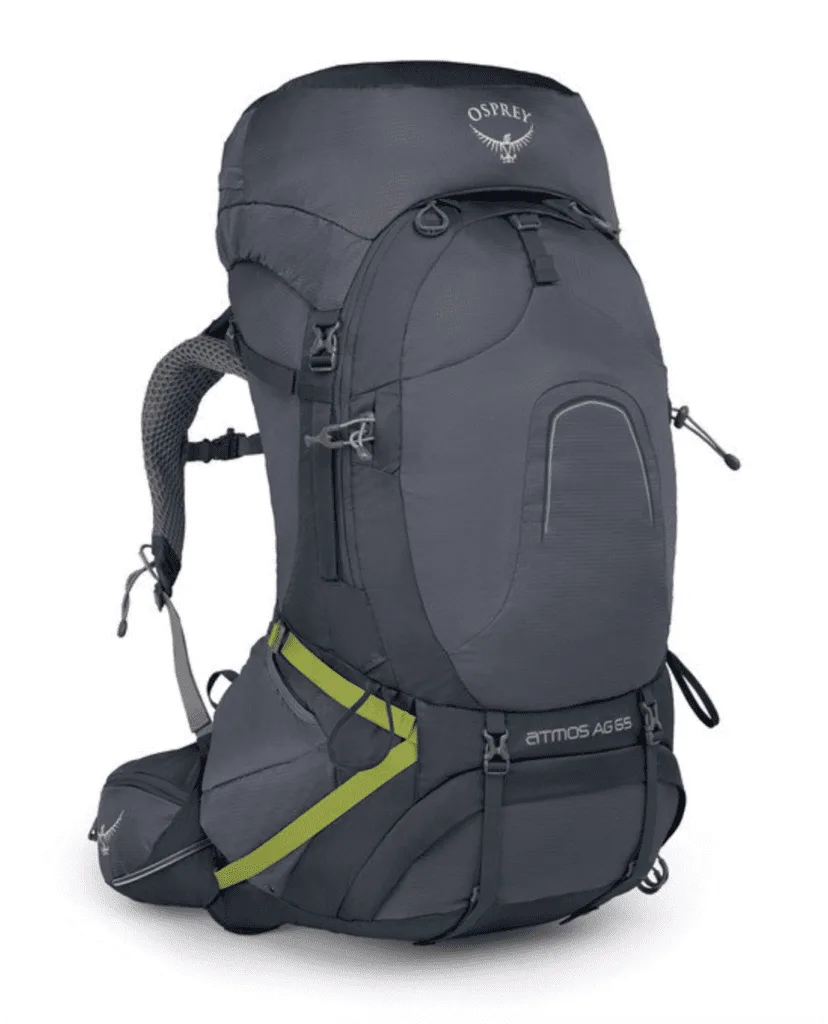

Osprey Rook vs Osprey Atmos: The Differences
Price: The price of the Osprey Rook vs Osprey Atmos is a pretty significant one. The Rook runs between $155 for the 50L pack to $165 for the 65L pack. The ATmos, on the other hand, costs $240 for the 50L and $270 for the 65L. That’s a difference of around $100, which is a chunk of change, to be sure.
Materials: Right off the bat, I noticed the materials were different. The main body of the Rok is made of 600D Polyester, which essentially means it doesn’t feel as high-quality as the Nylon Dobby of the Atmos. The Rook simply feels more…industrial?
Weight: As for weight, the Rook actually has a leg up on the Atmos. It only comes in one size and it weighs 3.52 pounds as opposed to the Atmos, which weighs between 4.48 pounds (small) to 4.64 pounds (large). That’s likely due to the differences in features and the suspension system.
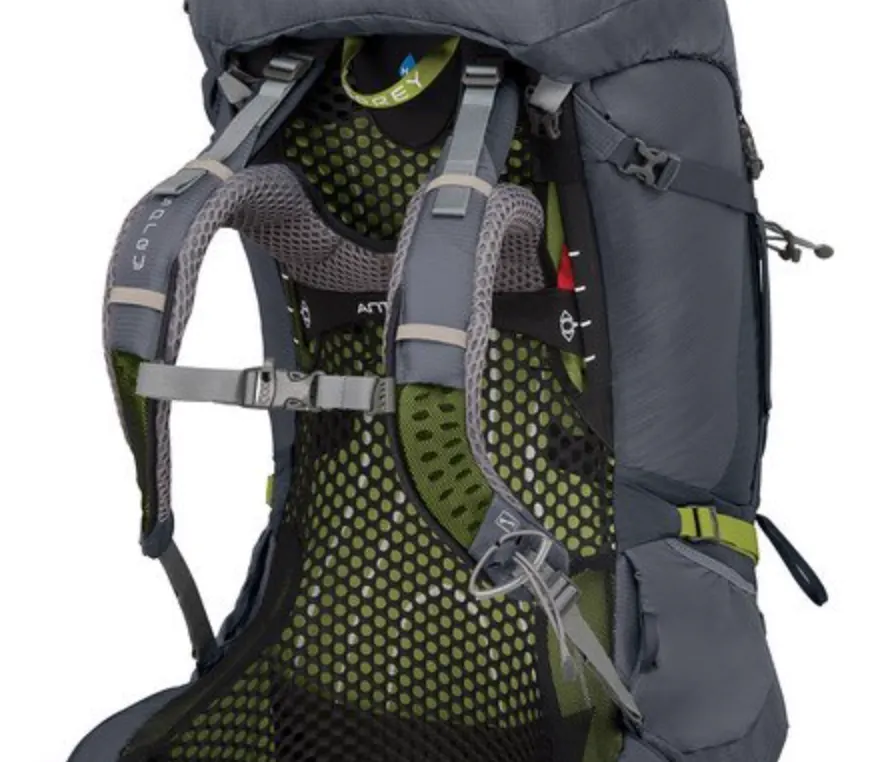
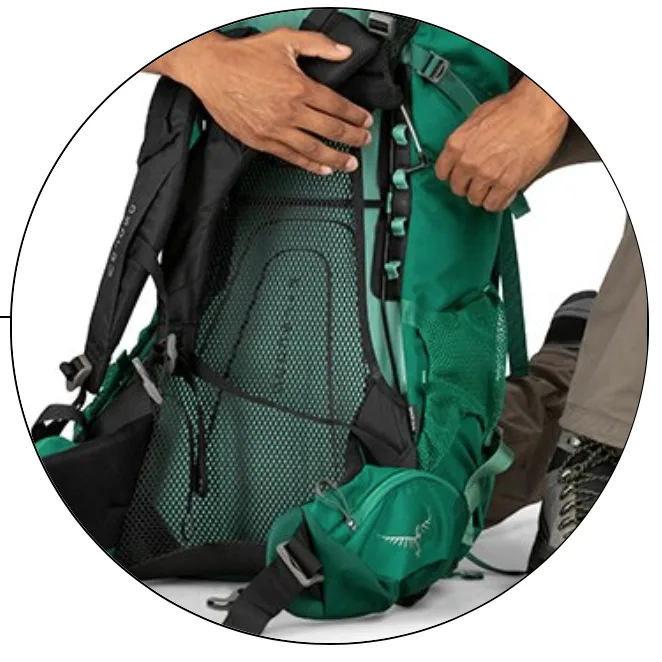
Suspension System: The Rook has a soft, edgeless, padded mesh harness that slides over the AirSpeed suspension offering over 4” of adjustability for a custom fit, which is necessary since the pack is one-size-fits-all. The Atmos, on the other hand, boasts the famous Osprey Anti-Gravity suspension system with an adjustable suspended harness with structural load-lifter bar for load transfer and comfort. That may not sound a lot different, but trust me when I say you can see and feel the differences. The straps and panel are more cushioned and form-fitting on the Atmos.
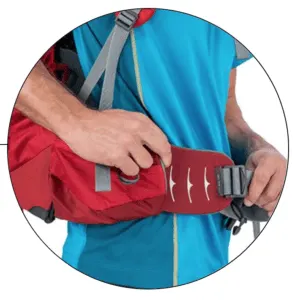
Hip Belt: The Rook doesn’t have an adjustable hipbelt, which is a bummer, especially if you’re especially large or small around the hips. The Atmos, on the other hand, has a largely adjustable Fit-on-the-Fly hipbelt that’s part of the suspended Anti-Gravity backpanel system, which makes it more comfortable.
Raincover: Another thing the Rook has going for it is the included integrated, removable raincover that stuffs into a zippered pocket in the bottom of the bag. If you want a rain cover for the Atmos, you have to buy it separately, which will run you about $25.
Floating Lid: Unlike the Atmos, the lid of the Rook is not removable. This isn’t an issue for many, but if you like the option of removing a little bulk and weight when you backpack, the option is nice to have, but hardly necessary in our opinion.
Front Pocket: I would have a hard time getting past the fact that the Rook doesn’t have a front stash pocket like the Atmos. I frequently jam maps, shed outer layers, hats, sunscreen, you name it in that front pocket and would be lost without it. But that’s just personal preference.
Load: For many, the load-bearing capability of these packs won’t matter too much–many backpackers have no desire to push the upper limits of what their pack can comfortably carry–but for distance and thru-hikers, it’s a real consideration. The Rook can carry 30-40lbs while the Atmos can bear 30-50lbs.
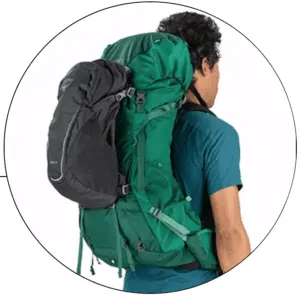
Attachments: The attachment points are slightly different on both bags, though neither is necessarily superior. The Rook has daisy chain loops along the sides of the front of the pack while the ATmos has trekking pole attachments. Essentially, what you prefer depends on what you carry, but if you intend to lash trekking poles to your bag, you’ll need extra bungees or some such on the Rook. The Rook does allow for easier attachment of an Osprey Daylite daypack if you want to add a bit of extra space to the outside of your load.
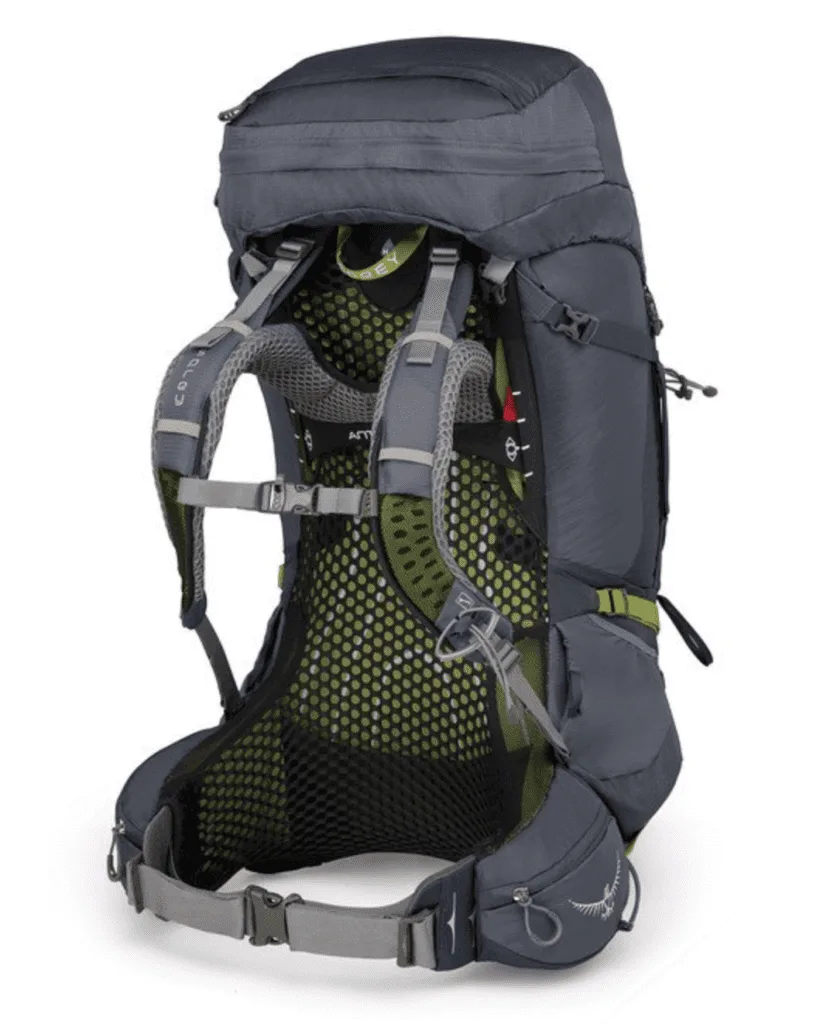
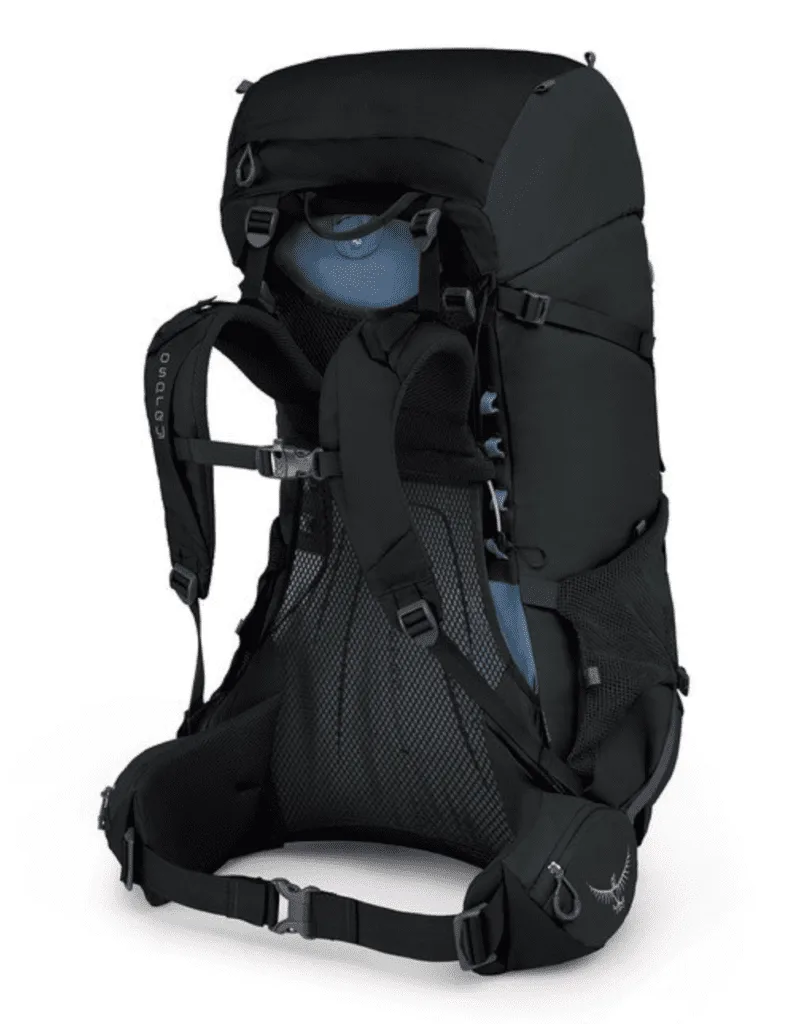
Osprey Rook vs Osprey Atmos: The Similarities
Torso Harness: Both the Rook and the Atmos have fully adjustable harnesses that offer a custom fit, though they do work differently. the Rook operates by hooking the suspension bar into anchored loops at fixed intervals while the Atmos has a sliding bar that offers a more custom fit.
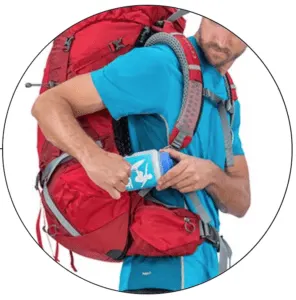
Side Pockets: Both packs also have stretchy mesh side pockets that allow you to stash a water bottle (or sunscreen or vegan protein bars or your favorite beanie or whatever) up and down or at an angle, which I love about Osprey packs. It makes sliding in a water bottle a lot easier without having to take off your pack. The mesh is made out of a different material on both, and the Rook’s may be a bit more capacious, but they’re very similar in form and function.
Lower Compartment: There are bottom zippered compartments with removable dividers in both packs, making it easy to stash clothes or your sleeping bag separately if you like. I sure do.
Compression Straps: Though they have slightly different placement, the suspension straps on the Rook and the Atmos are essential the same.

The Takeaway
Basically, which pack is right for you depends on, well, you. If you’re gearing up on a tight budget and can’t find a good deal on a quality pre-owned model, the Osprey Rook is an excellent budget option, surpassing a lot of other packs in its price class (the REI Flash 55 can only carry up to 30 lbs comfortably and costs $200).
But if it’s custom fit and features you want, the Atmos does outstrip the Rook in the end in our opinion. That said, it should be about fit and form first. Try on packs before you buy (or order from a retailer that offers free return shipping) to make sure the limited fit functions are going to work for you.
As for comfort, the Atmos is way more comfortable, even with nothing in it. The light padding in the straps and the softer mesh material just make it less groan-inducing when it comes time to load onto your shoulders.
The long and the short of it is this: We all like different fits and features in our backpacks, so whether the Osprey Rook vs Osprey Atmos is right for you is your call to make. But we hope we’ve made it a little easier to see the differences so you can pick that pack with confidence and hit the trail. Either way, all Osprey packs come with their All Mighty Guarantee, which means they’ll repair or replace malfunctioning gear. So you can be certain you’ll be trucking along with whichever pack you choose for a long, long time.
•
Check out our review of the Osprey Atmos 50 here and a comparison of Osprey Ultralight backpacks here.
•
Get the Osprey Atmos 50 here and the Atmos 65 here/Osprey Aura 50 here and the Aura 65 here.
Get the Osprey Rook 50 here and the Rook 65 here/Osprey Renn 50 here and the Renn 65 here.
*This post contains affiliate links, which means we might get a small percentage of any sales. Buy yourself a pack by clicking on a link above and we might be able to buy ourselves a shiny new ultralight cat hole shovel!*
•
There are a handful of differences between the two packs, including the suspension, rain cover, price, materials, and weight of the packs.
Yes! Osprey offers their All Mighty Guarantee on all their products. That means if there’s a manufacturing defect or malfunction, they’ll fix it, usually for free, for the life of the pack.
Both packs come in 50L and 65L sizes.
Technically, yes. The women’s specific version of the Rook is called the Renn and the women’s version of the Atmos is called the Aura. However, many women find the Rook and Atmos just as comfortable.
These are some of the most comfortable packs we have ever owned.
Josh is a freelance video producer, DP and editor based in Ogden, UT. When he’s not out exploring the world, he loves talking movies, tech, and travel. Check out his website, joshmcdarris.com
